Welcome | Registration | Program | Speaker Bios and Abstracts | Hotel | Sponsors
2025 Meeting Speaker Bios and Abstracts - 2026 Speakers will be posted soon!
Wael Att
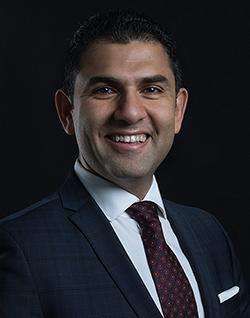
Biography- Dr. Att is a professor of prosthodontics at the Department of Prosthodontics at School of Dentistry, University of Freiburg, Germany and former Professor and Chair of the Department of Prosthodontics at Tufts University School of Dental Medicine. He is the co-founder of The Face Dental Group in Boston. Also, Dr. Att is the Head of the United States Education Delegate of The International Team for Implantology (ITI) and the United States Ambassador of The European Association for Osseointegration (EAO). He is a board-certified prosthodontist from the German Society of Prosthodontics and Biomaterials (DGPro) an active member of multiple professional organizations, including the European Academy of Esthetic Dentistry (EAED), International Academy of Digital Dental Medicine, International College of Prosthodontists, Greater New York Academy of Prosthodontics and others. He serves as Past-President of the International Academy for Digital Dental Medicine (IADDM), Past-President of the Prosthodontics Group of the International Association for Dental Research (IADR) as well as President of the Arabian Academy of Esthetic Dentistry (ARAED). A widely published and internationally respected clinician and lecturer, Dr. Att’s main focus within teaching, research and private practice is esthetic and implant dentistry as well as well as the implementation of cutting-edge digital technologies in both reconstructive and multidisciplinary dentistry.
Harnessing AI in Esthetic Full-Arch Implant Rehabilitations
AI technology is revolutionizing reconstructive dentistry, improving diagnostics, treatment planning, and patient outcomes. This presentation will highlight the role of AI in esthetic implant rehabilitations, focusing on how it enhances data accuracy, streamlines treatment, and accelerates manufacturing processes. We’ll explore the integration of surgical, functional, and esthetic components, especially in full-arch rehabilitations, demonstrating how AI can significantly elevate practice efficiency and predictability.
Learning Objectives:
- Explore advancements in contemporary digital workflows.
- Understand the impact of new technologies in esthetic implant full-arch rehabilitations
- Discover how AI enhances efficiency and predictability in esthetic full-arch treatments.
Oded Bahat
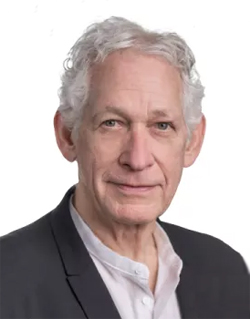
Biography- Dr. Oded Bahat graduated from the University of the Witwatersrand School of Medicine and Dentistry in South Africa in 1977. He received his specialty degree in periodontology and his MSD from the University of Washington in 1981. He has been a diplomate of the American Board of Periodontology since 1986, and a recipient of the Master Clinician Award from the American Academy of Periodontology in 2018. He was the Chairman and Director of the Periodontics Post Doctorate at the University of Southern California School of Dentistry in Los Angeles, California from 1983 to 1987. He lectures extensively, both nationally and internationally, on many surgical topics primarily related to the surgical reconstruction of bone, soft tissue and implant reconstruction. He has published over 50 scientific articles and has edited multiple chapters in various textbooks. He is on the review board of the International Journal of Oral & Maxillofacial Implants as well as The Journal Clinical Implant Dentistry and Related Research. He is currently in a private practice limited to surgical reconstruction, implant surgery and periodontics in Beverly Hills, California. In 2018 D. Bahat was the recipient of the Master Clinician Award from the American Academy of Periodontology. In June of 2019 Dr. Bahat was the recipient of the Outstanding Contribution to Periodontics, California Society of Periodontics.
As We Evolve Implants Do Not Evolve With us
Facial changes have been demonstrated in all age groups, although the exact time of onset, magnitude, and vectors are variable and not predictable. Such three-dimension changes in the position of teeth, bone and soft tissue relative to the static position of the implants, over time, can introduce esthetic and functional negative consequences. A new surgical protocol to reduce these unintended complications, as well as various grafting procedure and techniques, will be discussed.
Learning Objectives:
- Identify the vectors of cranial changes in both men and women that are clinically significant for implant reconstruction.
- Explore surgical planning possibilities to minimize and slow down the impact of such changes.
- For patients already treated, review surgical correction possibilities and correct as necessary.
2025 APS Golden Medallion Awardee
Gerry Chiche
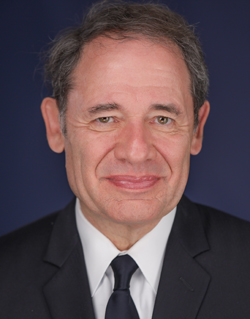
Biography- Dr. Chiche is presently Clinical and Emeritus Professor at Louisiana State University School of Dentistry. He is a Past President of the American Academy of Esthetic Dentistry, and he has lectured in Esthetic Dentistry nationally and internationally in 35 countries. He is the author of two textbooks in Esthetic Dentistry published by Quintessence Publishing Co.: “Esthetics of Anterior Fixed Restorations” with Alain Pinault, and “Smile Design” with Hitoshi Aoshima. He became in 2009 the first recipient of the Endowed Chair sponsored by the Thomas P. Hinman Dental Society during his tenure as Director of the Center of Esthetics and Implants at Augusta University. Finally, he is the 2020 recipient of the Icon Award for Lifetime Achievement in Dentistry of the Seattle Study Club.
Esthetic Full-Mouth Rehabilitations: A 45-Year Perspective.
This presentation will outline the simultaneous management of the most relevant esthetic and risk factors in a step-by-step method to maximize the success of esthetic full-mouth rehabilitations. A long-term perspective on interdisciplinary esthetic planning and its impact on gingival management, and the most decisive criteria for VDO decision will be discussed along with ceramics material selection. The final materials decision will be analyzed on the basis of esthetics rendition and strength properties according to the state of attrition, the severity of the malocclusion, and the cause of tooth wear.
Learning Objectives:
- Create a systematic protection strategy for medium and high-risk patients.
- Control the key factors for optimum esthetic, occlusal, and gingival design in interdisciplinary treatment.
- Manage VDO options and rehabilitation sequence.
- Select ceramic materials for optimum esthetics and strength under various conditions.
Click Here for Dr. Chiche's Welcome & Lecture Preview
APS 2025 Kenneth Rudd Awardee
Christian Coachman
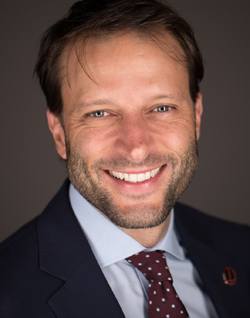
Biography- Combining his advanced skills, experience and technology solutions, Christian Coachman pioneered the Digital Smile Design methodology and founded Digital Smile Design company (DSD). He is the developer of worldwide well-known concepts such as the Digital Smile Design, the Pink Hybrid Implant Restoration, the Digital Planning Center, Emotional Dentistry, Interdisciplinary Treatment Simulation and Digital Smile Donator. He regularly consults for dental industry companies, developing products, implementing concepts and marketing strategies. He has lectured and published internationally in the fields of esthetic and digital dentistry, dental photography, oral rehabilitation, dental ceramics, implants and communication strategies and marketing in Dentistry.
Dentist-Lab Synergy in the Digital Era
The technological disruption in dentistry is transforming the role of technicians and placing labs in the center of this revolution. There is no digital dentist, there are digital teams. Modern Dentistry is a Team Sport, and the players are digitally connected. This lecture will focus on pragmatic and realistic systems to improve the, so important, communication between the dentist and the technician to create more precise, predictable and natural outcomes.
Learning Objectives:
- Understand the steps of a comprehensive digital workflow when rehabilitating smiles.
- Creating protocols to communicate on key moments in an automated way.
- Learn how digital can facilitate the restorative process with concepts like Complete Patient Digitalization, Cloud Dentistry, Asynchronous Communication, Copy-Paste Dentistry, Natural Algorithms and Digital Quality Control.
Click Here for Dr. Coachman's Welcome & Lecture Preview
German Gallucci
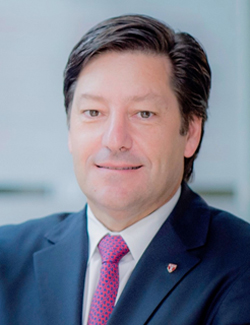
Biography- Dr. Gallucci is the Chair of the department of Restorative Dentistry and Biomaterials Sciences at Harvard School of Dental Medicine. He obtained his Doctorate in Dental Medicine at the department of Prosthodontics, School of Dental Medicine at the University of Geneva, Switzerland. Dr. Gallucci actively participates in clinical research related to implant-prosthodontics and Digital Dentistry. His work has been published in International peer reviewed journals and is member of the editorial board for several scientific dental journals. Dr. Gallucci participates as invited lecturer in international and national conferences and congresses. He is fellow of the Academy of Prosthodontics, International Team for Implantology (ITI), Switzerland, and active member of the Academy of Osseointegration (AO) - USA, European Academy of Osseointegration (EAO), Greater New York Academy of Prosthodontics, (GNYAP) and International Academy of Dental Research (IADR).
Restorative Solutions for Full-Arch Implant Rehabilitations
Treatment of edentulous patients with fixed implant rehabilitations has been largely discussed in peer review publications and scientific meetings worldwide. This is in part due to the vast scientific evidence harvested since the beginning of implant dentistry on this specific clinical indication. Today, several protocols for reducing treatment time and improving prosthodontic design are being proposed; however, scientific evidence of modern clinical trials calls for a critical assessment. Treatment sequence will be presented and categorized according to their corresponding prosthetic designs and the choice of restorative mateials. This lecture intends to present in a systematic way clinical, scientific, and implant related information leading to translational clinical recommendations in the treatment of edentulous jaws with fixed prosthesis.
Learning Objectives:
- To assess different implant prosthodontic designs and related restorative materials.
- To discuss clinical protocols to treat edentulous patients with fixed prosthesis.
- To evaluate long-term treatment outcome.
Brian Goodacre
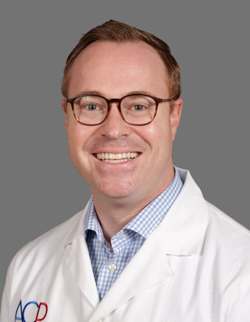
Biography- Dr. Brian J. Goodacre received his DDS degree from Loma Linda University School of Dentistry in 2013. He completed a four-and-a-half-year combined program in Prosthodontics and Implant Dentistry at Loma Linda University School of Dentistry in 2017, earning an MSD degree. He is a board-certified prosthodontist and the director of clinical technologies for Nobel Biocare North America. He is an adjunct professor at Loma Linda University School of Dentistry providing lectures to both dental and graduate students. Dr. Goodacre lectures both nationally and internationally on topics related to digital dentistry, prosthodontics, and implant dentistry. Additionally, he has published over twenty articles in peer-reviewed journals and contributed to 6 textbook chapters. He maintains a private practice located in Upland, California where he practices with his father and classmate.
Clinical Workflows for Digital Dentures: Scanning, Milling & Printing
Since the introduction of digital dentures, many aspects have improved. Such improvements include streamlined workflows, easy-to-use software, and new and improved manufacturing techniques. This presentation will demonstrate the clinical workflows and discuss the benefits and limitations of using these emerging techniques. Additionally, it is widely known that 3D-printed complete dentures are becoming a viable option, but how do they compare to milled dentures? This lecture will compare the physical properties of milled and printed complete dentures to help determine their best applications.
Learning Objectives:
- Review clinical workflows for digital dentures
- Discuss how to utilize intraoral scanners to streamline your digital denture workflow
- Compare 3D printed and milled denture properties
Click Here for Dr. Goodacre's Welcome & Lecture Preview
Galip Gurel
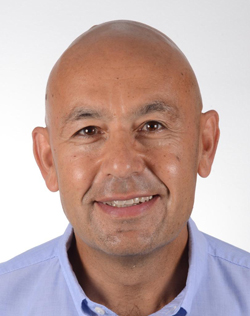
Biography- Dr. Galip Gurel graduated from the University of Istanbul, Dental School in 1981. He continued his education at the University of Kentucky, Department of Prosthodontics. Received his MSc degree from Yeditepe University in, Istanbul. Dr. Gurel is the founder and the honorary president of EDAD (Turkish Academy of Aesthetic Dentistry). He was the President of the European Academy of Esthetic Dentistry (EAED) for 2011 & 2012. He received “The Smigel” award in October 2014 which is granted biennially by New York University College of Dentistry to honor the best esthetic dentists in the world. He is a visiting professor at the New York University (USA) , Marseille Dental University (France) and Istanbul Yeditepe University (Turkey). He is the author of “The Science and Art of Porcelain Laminate Veneers” published by Quintessence publications in 2003 translated into 13 different languages. He has been practicing in his own clinic in Istanbul, specializing in Aesthetic Dentistry, since 1984.
Set the Stage Before You Start
Creating of a ‘new smile design’ and its execution comes from our past experiences, present experiments and their reflection for the future expectations. In today's dentistry regardless of how complex a case is, the patients will not be happy if the final aesthetic outcome will not fit their expectations. Therefore, it is imperative that outlines of the final smile design should be communicated with the patient even before the treatment planning is decided and approved. For an aesthetically and functionally successful case this is mandatory and called the PRE-VISUALISATION. The dentist should never start any procedure without visualising the final result at the very beginning of the whole treatment.
However, in order to pre-visualise the final smile design in the mouth, in 3D, it needs certain tasks to be realised. Going back to basics, the simplistic approach to that will be the application of the direct mockup in the mouth. Even though it appears to be a simple task, in reality in order to get a true realistic design, that needs a solid communication between the dentist, specialist(s) and the lab. And these all hold true while treatment planning of patients at any age. Recently with the introduction of smart software that you can design these cases digitally, the most precise and repeatable communication between the team, patient and the lab can be achieved.
Learning Objectives:
- Importance of the mockup
- Digital vs direct design
- Reality behind minimal invasive
Jim Janakievski
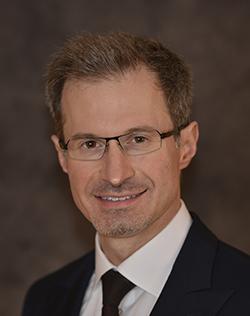 Biography- Jim Janakievski received his D.D.S. from the University of Toronto, which was followed by a general practice residency. After several years in general practice, he completed his post-graduate training at the University of Washington, where he received a certificate in Periodontology with a M.S.D. degree and a fellowship in Prosthodontics. He began his academic position at the University of Washington as assistant director of Graduate Periodontics and is currently an affiliate assistant professor.
Biography- Jim Janakievski received his D.D.S. from the University of Toronto, which was followed by a general practice residency. After several years in general practice, he completed his post-graduate training at the University of Washington, where he received a certificate in Periodontology with a M.S.D. degree and a fellowship in Prosthodontics. He began his academic position at the University of Washington as assistant director of Graduate Periodontics and is currently an affiliate assistant professor.
Dr. Janakievski is a Diplomate of the American Board of Periodontology, a member of the American Academy of Restorative Dentistry and a Fellow of the American Academy of Esthetic Dentistry. He is a reviewer for several dental journals and has published in the area of interdisciplinary dentistry, dental implants and tooth autotransplantation. Dr. Janakievski teaches at Spear Education in Scottsdale Arizona and he participates in practice based clinical research through the McGuire Institute. He maintains a private practice in Tacoma, Washington.
Greggory Kinzer
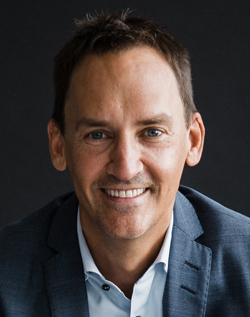
Biography- Greggory Kinzer received his D.D.S. degree from the University of Washington in 1995, and an M.S.D. and certificate in Prosthodontics in 1998. Dr. Kinzer is an internationally recognized speaker who serves as a full-time faculty member, Faculty Chair, and Director of Curriculum and Campus Education for Spear Education in Scottsdale, AZ. His is also an affiliate assistant professor in the Graduate Prosthodontics Department at the University of Washington School of Dentistry and an adjunct faculty at Arizona School of Dentistry and Oral Health. In addition, Dr. Kinzer has written numerous articles and chapters and serves on the editorial review board for various dental publications.
Dr. Kinzer is a gifted academician and clinician who is committed to advancing the art and science of restorative dentistry. His interdisciplinary approach to dentistry is founded in empirical based research and clinical experience. Dr. Kinzer’s unique ability to impart complex clinical processes in a logical, systematic and clear methodology differentiates him from other dental educators. He maintains a private practice with his wife in Seattle, WA limited to comprehensive restorative and esthetic dentistry.
Interdisciplinary Collaboration to Provide Tooth Replacement in our Growing Patients
Clinicians may encounter treatment challenges with our growing patients that present with dental trauma. Treatment options are usually focused on interim tooth replacement along with extraction, space closure or space appropriation for a future dental implant. Tooth autotransplantation can provide additional options for these patients aimed at tooth preservation and ridge management.
Learning Objectives:
- The surgical considerations for an optimal outcome.
- The importance of correct orthodontic positioning of the transplanted tooth
- The restoration of a transplanted premolar to mimic a central incisor
Tal Morr
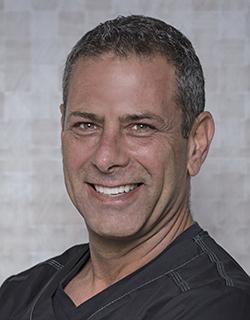 Biography- Dr. Tal Morr maintains a private practice in Aventura Florida limited to Aesthetic, Implant, and Complex Restorative Dentistry. Dr. Morr received his DMD degree from Tufts University School of Dental Medicine. He then continued his studies at the University of Washington Prosthodontic program where he received a certificate in Prosthodontics and a Masters of Science in Dentistry (MSD) degree. Dr. Morr is considered a leader in the field of complex restorative, esthetic, and implant dentistry and has lectured extensively for the last 29 years both nationally and internationally on these topics. Dr. Morr is also a published author on aesthetically related dental topics such as veneers, implants, and complex restorative dentistry. Dr. Morr is a member of numerous professional organizations such as the American College of Prosthodontics, the American Academy of Esthetic Dentistry, the American Academy of Restorative Dentistry, and the American Dental Association as well as many local and international study clubs. He is a recipient of the Saul Schlugar award; the highest honor from the Seattle Study Club for excellence in diagnosis, treatment planning and execution of complex restorative cases.
Biography- Dr. Tal Morr maintains a private practice in Aventura Florida limited to Aesthetic, Implant, and Complex Restorative Dentistry. Dr. Morr received his DMD degree from Tufts University School of Dental Medicine. He then continued his studies at the University of Washington Prosthodontic program where he received a certificate in Prosthodontics and a Masters of Science in Dentistry (MSD) degree. Dr. Morr is considered a leader in the field of complex restorative, esthetic, and implant dentistry and has lectured extensively for the last 29 years both nationally and internationally on these topics. Dr. Morr is also a published author on aesthetically related dental topics such as veneers, implants, and complex restorative dentistry. Dr. Morr is a member of numerous professional organizations such as the American College of Prosthodontics, the American Academy of Esthetic Dentistry, the American Academy of Restorative Dentistry, and the American Dental Association as well as many local and international study clubs. He is a recipient of the Saul Schlugar award; the highest honor from the Seattle Study Club for excellence in diagnosis, treatment planning and execution of complex restorative cases.
Prosthetic Management of the Adolescent Patient with Missing, Malformed, or Broken Teeth
All too often we see young patients with congenitally missing teeth or simply teeth that may be lost due to trauma. Sometime is may be a congenital disorder while other times not. Due to the stages of growth and development of the adolescent patient, it is important to consider this in the planning of therapy as well as taking into consideration the impact of having broken, malformed or missing teeth on the mental development of these patient. Understanding the options and considerations for prosthetic replacement, timing of tooth replacement or modification, and the prosthetic options we can utilize during these stages of growth is critical. Having a comprehensive understanding and plan will insure a predictable result in the future while allowing the patient to function normally in society.
Learning Objectives:
- Options for tooth replacement in the young patient.
- Timing of Restorations and considerations for both implant placement and prosthetic replacement
- The psychological factor of tooth replacement and it’s effect on decision making
Frauke Müller
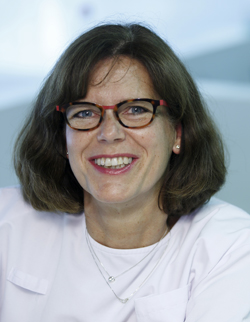
Biography- Frauke Müller is professor and chair for gerodontology and removable prosthodontics at the University Clinics of Dental Medicine at the University of Geneva, Switzerland. Frauke Müller has been President of various learned societies. She co-edited the ITI Treatment Guide no 9 on “Implant therapy in the Geriatric Patient” and the textbook “Oral Healthcare and The Frail Elder”. She is Associate Editor of the Journal of Oral Rehabilitation and Gerodontology. She is an honorary member of the European College of Gerodontology, the BSSPD and the International Team of Implantology (ITI). Frauke Müller was awarded the IADR Distinguished Scientist Award twice, in 2013 in Geriatric Oral Research and in 2023 in Research in Prosthodontics and Implants. In 2019 she received an Honorary Doctorate from the University of Thessaloniki. Her research activity is mainly related to gerodontology, oral function as well as complete and implant prosthodontics.
Prostheses & More: Prosthodontic Management in Old and Very Old Patients
Although tooth loss in old and very old patients is still a reality, it is increasingly shifting to an age in which the physiological signs of ageing, fragility and morbidity must be taken into account. Declining visual acuity, sense of smell and touch as well as increasingly poor manual dexterity with age have to be taken into consideration when designing dental prostheses. With the onset of dependency and multimorbidity, a number of risk factors arise that require special prevention and treatment concepts. The prevalence of dry mouth in older people is up to 30%, which implies an increased risk of root caries. Swallowing disorders are also frequently observed, which, in combination with a high bacterial colonization of the oral cavity, can lead to fatal aspiration pneumonia. Hence, extraction criteria must be considered against the background of the risk of bacterial colonization of hard tooth surfaces, while at the same time taking into account the patient's current and future autonomy and ability to manage their prostheses. The lecture describes the context of a multimorbid patient in need of prosthodontic care in the later stages of life and provides guidelines to accompany their functional decline.
Learning Objectives:
- Know the age-related changes of the orofacial system and take them into consideration within the context of a prosthodontic treatment plan
- Design an age-adequate prostheses
- Apply strategies to accompany an ailing patient’s functional decline
Sally Safa
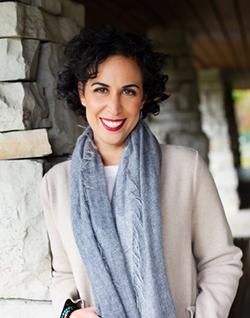 Biography: Dr. Sally Safa is a board certified Periodontist working in Toronto and an alumna of the University of Toronto where she also teaches at the Faculty of Dentistry. She is a passionate advocate of wellness for dentists. Her masters degree in Psychoneuroimmunology, understanding the effects of stress on the body and brain, combined with her training in MBSR (Mindfulness Based Stress Reduction) allows her to share the science behind stress and happiness. She lectures nationally and internationally and is the authors numerous articles. sally@mindfuldentist.ca
Biography: Dr. Sally Safa is a board certified Periodontist working in Toronto and an alumna of the University of Toronto where she also teaches at the Faculty of Dentistry. She is a passionate advocate of wellness for dentists. Her masters degree in Psychoneuroimmunology, understanding the effects of stress on the body and brain, combined with her training in MBSR (Mindfulness Based Stress Reduction) allows her to share the science behind stress and happiness. She lectures nationally and internationally and is the authors numerous articles. sally@mindfuldentist.ca
The Happy Dentist – the Science of Stress, Success and Happiness
Dentists are strivers! We worked hard, sacrificed so much to be successful only to realize that success does not bring happiness. The term arrival fallacy is the belief that attaining a particular goal will lead to long term happiness and that is just not true….not unless we understand the science behind happiness. What we often think makes us happy has been shown to be wrong. As dentists we are a group that’s particularly prone to stress, anxiety, depression and burnout. The always striving, never enough, goal oriented mindset got us here, but it’s not keeping us here.
In this lecture, Dr. Sally Safa will delve into the science behind stress, highlighting the difference between a Stress Response and Stress Reaction. Using science backed techniques, we will see how mind training can rewire the brain, discover what truly makes us happy and why the practices taught in mindfulness based stress reduction (MBSR) can reduce stress, improve performance and increase happiness.
Learning Objectives:
- Understand why strivers are unhappy and what the arrival fallacy means for understanding long term happiness
- Explore how chronic stress negatively rewires the brain and the science backed tools of mindfulness to reverse these effects
- Learn easy to use mindfulness practices that will allow us to combat stress, anxiety and learn to live happy aligned with what matters most
Click Here for Dr. Safa's Welcome & Lecture Preview
Francesca Vailati
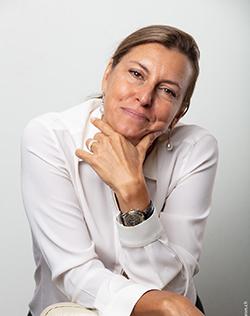 Biography: Graduated in Medicine from the University of Bari, Italy, in 1996, Dr. Vailati left Europe to begin her dental training in the United States of America. She obtained her second degree in Dentistry in 2000 the University of Pennsylvania (UPENN, USA), and in 2003 she obtained her specialty in Prosthetics at the University of Connecticut (UCONN, USA). Returning to Europe in 2004, she joined the Prosthetics Department headed by Prof. Urs Belser at the University of Geneva in Switzerland. After working alongside one of the world's best dentists in the field of aesthetics and adhesion, Prof. Pascal Magne, Dr. Vailati took his place (after Prof. Magne moved abroad), pursuing clinical research on adhesive techniques combined with the principles of classical prosthetics learned in America. In 2005, Dr. Vailati developed the 3STEP method to treat patients with tooth wear through a Comprehensive approach, no longer invasive. Thanks to the huge number of patients rehabilitated following the 3STEP method, she also became an expert in the treatment of patients with Bruxism. Today Dr. Vailati is considered one of the leading exponents in the field of Gnathology applied to tooth wear and chewing dysfunction. Since 2007, Dr. Vailati has been practicing in Geneva, focusing mainly on complex rehabilitations with aesthetic and functional problems, following the completely non-invasive principles of ADDITIVE Prosthodontics. Dr. Vailati's pioneering work in fusing classical Prosthodontics with adhesive techniques has culminated in her bestselling book, "3STEP, the Additive Prosthodontics," which was released in 2022 and has already been translated into multiple languages to meet the great demand internationally for teaching in the field of functional Additive Prosthodontics. Finally, Dr. Vailati founded her Academy (3STEP Academy), and its E-learning platform, to continue training dentists worldwide in the 3STEP method, Additive Prosthetics and Gnathology, always in line with the non-invasive approach in treating patients.
Biography: Graduated in Medicine from the University of Bari, Italy, in 1996, Dr. Vailati left Europe to begin her dental training in the United States of America. She obtained her second degree in Dentistry in 2000 the University of Pennsylvania (UPENN, USA), and in 2003 she obtained her specialty in Prosthetics at the University of Connecticut (UCONN, USA). Returning to Europe in 2004, she joined the Prosthetics Department headed by Prof. Urs Belser at the University of Geneva in Switzerland. After working alongside one of the world's best dentists in the field of aesthetics and adhesion, Prof. Pascal Magne, Dr. Vailati took his place (after Prof. Magne moved abroad), pursuing clinical research on adhesive techniques combined with the principles of classical prosthetics learned in America. In 2005, Dr. Vailati developed the 3STEP method to treat patients with tooth wear through a Comprehensive approach, no longer invasive. Thanks to the huge number of patients rehabilitated following the 3STEP method, she also became an expert in the treatment of patients with Bruxism. Today Dr. Vailati is considered one of the leading exponents in the field of Gnathology applied to tooth wear and chewing dysfunction. Since 2007, Dr. Vailati has been practicing in Geneva, focusing mainly on complex rehabilitations with aesthetic and functional problems, following the completely non-invasive principles of ADDITIVE Prosthodontics. Dr. Vailati's pioneering work in fusing classical Prosthodontics with adhesive techniques has culminated in her bestselling book, "3STEP, the Additive Prosthodontics," which was released in 2022 and has already been translated into multiple languages to meet the great demand internationally for teaching in the field of functional Additive Prosthodontics. Finally, Dr. Vailati founded her Academy (3STEP Academy), and its E-learning platform, to continue training dentists worldwide in the 3STEP method, Additive Prosthetics and Gnathology, always in line with the non-invasive approach in treating patients.
Additive not invasive Prosthodontics, an Alternative in our Treatment Planning
Additive non-invasive prosthodontics is an innovative approach which can provide clinicians with an extra weapon while treating a difficult population composed by erosive, bruxist and phobic patients. This treatment strategy is based on the 3STEP method, and helps clinicians to complete full-mouth rehabilitations, stabilizing the patient’s function and improving their esthetic. Because of its non-invasive nature, it can propose more comfortable and less intimidating dental procedures . Furthermore, this approach is faster and less expensive. Why not to use it with our patients?
Learning Objectives:
- Present the 3STEP method
- Show the long follow-up of cases of full mouth wear treated following the NON invasive Prosthodontics approach
- Introduce the potentials to treat a wider population of dysfunctional patients
